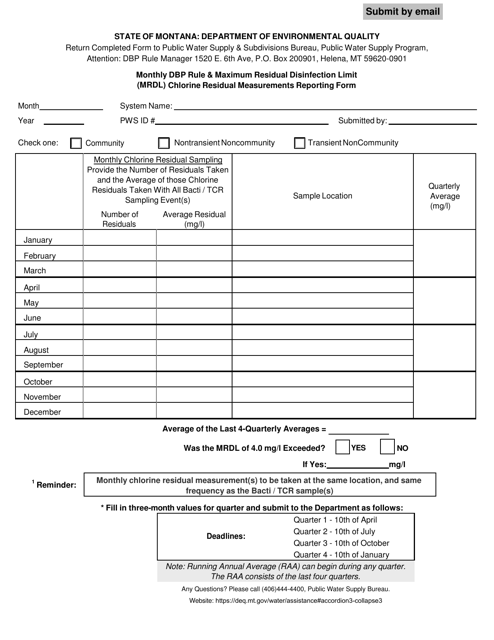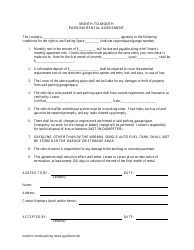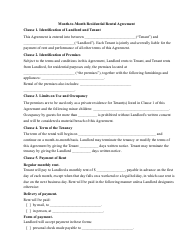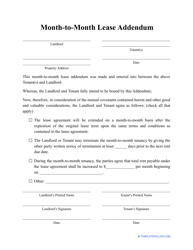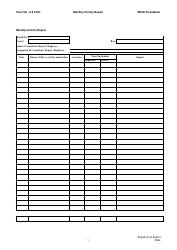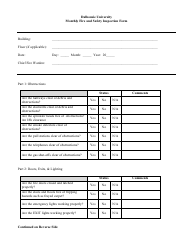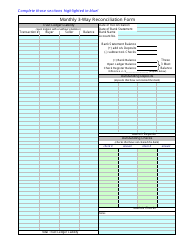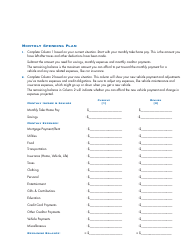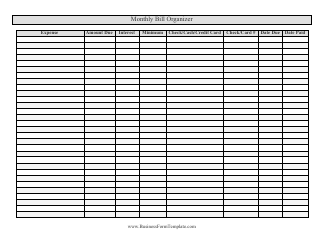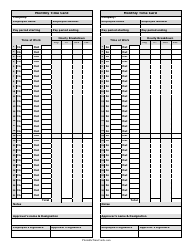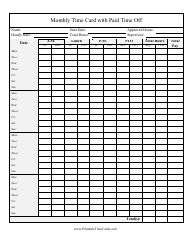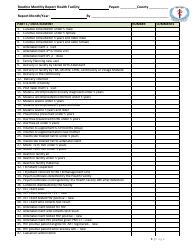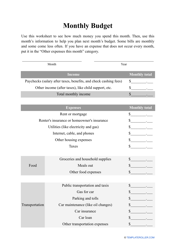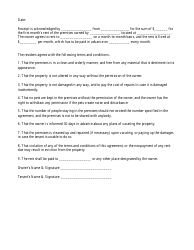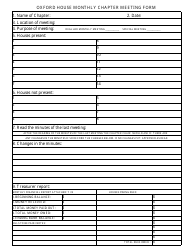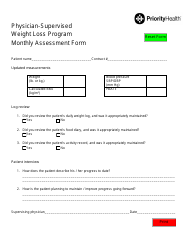Monthly Dbp Rule & Maximum Residual Disinfection Limit (Mrdl) Chlorine Residual Measurements Reporting Form - Montana
Monthly Dbp Rule & Maximum Residual Disinfection Limit (Mrdl) Chlorine Residual Measurements Reporting Form is a legal document that was released by the Montana Department of Environmental Quality - a government authority operating within Montana.
FAQ
Q: What is the Monthly DBP Rule?
A: The Monthly DBP Rule refers to the Disinfection Byproducts Rule, which sets regulations on the levels of disinfection byproducts in drinking water.
Q: What is MRDL?
A: MRDL stands for Maximum Residual Disinfection Limit, which is the maximum allowable concentration of a disinfectant in drinking water.
Q: What is the purpose of the Chlorine Residual Measurements Reporting Form in Montana?
A: The purpose of the Chlorine Residual Measurements Reporting Form is to report the measurements of chlorine residual in drinking water in Montana.
Q: Why is chlorine residual measured in drinking water?
A: Chlorine residual is measured in drinking water to ensure that a sufficient amount of disinfectant is present to effectively kill bacteria and viruses.
Q: Who is responsible for reporting chlorine residual measurements in Montana?
A: The reporting of chlorine residual measurements in Montana is the responsibility of water system operators or managers.
Q: Are there regulations on the levels of disinfectant in drinking water?
A: Yes, there are regulations on the levels of disinfectant, such as chlorine, in drinking water to ensure safe consumption.
Q: What happens if the chlorine residual measurements exceed the MRDL?
A: If the chlorine residual measurements exceed the MRDL, it may indicate an overuse of disinfectant, which can have adverse health effects.
Q: Is the Monthly DBP Rule applicable only in Montana?
A: No, the Monthly DBP Rule is a federal regulation that applies to all states in the United States.
Q: What are disinfection byproducts?
A: Disinfection byproducts are chemicals that form when disinfectants, such as chlorine, react with organic matter in water.
Q: What are the health risks of disinfection byproducts?
A: Exposure to disinfection byproducts can increase the risk of bladder cancer, reproductive problems, and other adverse health effects.
Form Details:
- The latest edition currently provided by the Montana Department of Environmental Quality;
- Ready to use and print;
- Easy to customize;
- Compatible with most PDF-viewing applications;
- Fill out the form in our online filing application.
Download a fillable version of the form by clicking the link below or browse more documents and templates provided by the Montana Department of Environmental Quality.
